No independent record label enjoyed the kind of success that Creation Records did throughout the 1980s and 1990s. Hold its discography up to any other label over that period, and it would be tough to argue that anyone did it better (with the exception of maybe 4AD, but not likely). Following in the footsteps of successful indies like Rough Trade, Cherry Red and Postcard, Creation was founded by a red-haired loudmouth named Alan McGee, along with his partners Dick Green and Joe Foster, as a home for music that didn't fit in the mainstream. And yet thanks to a 1984 single called "Upside Down" by a young Scottish band named the Jesus & Mary Chain, McGee found his label flirting with commercial success, which he would attain in full one decade later.
Nicknamed the "International Guardians of Rock and Roll," Creation was there leading the way for every major movement in rock music in its 17-year run: indie pop and C86, acid house, shoegaze, grunge and Britpop. Even when it struggled to stay relevant in its last remaining years, McGee was still able to go out on a high note in 2000 with one of his finest records, Primal Scream's XTRMNTR. Without Creation, My Bloody Valentine may never have been able to afford to make Loveless; Super Furry Animals may never have left the green grasses of Wales; Primal Scream may never have discovered ecstasy; and Noel Gallagher may never have taken over his brother's band and instead may have returned to the road with Inspiral Carpets as their guitar tech.
In his 2000 book, The Creation Records Story: My Magpie Eyes Are Hungry for The Prize, author David Cavanagh summed up the secret to McGee's success: "The reason Creation succeeded where other labels failed is not because McGee is a success and his rivals are all failures, but because he persevered when they gave up; because he took risks while they played safe and because he found Oasis just when he needed them."
Essential Albums:
10. Felt
Forever Breathes the Lonely Word
(1986)
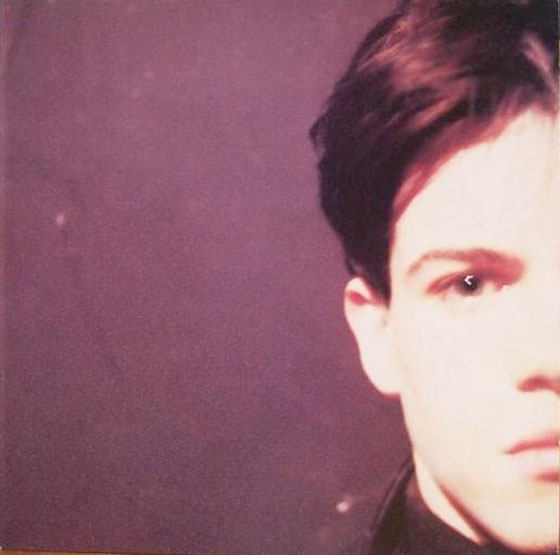
Arguably the most intriguing and misunderstood figure in Creation's history was Felt's mononymous leader, Lawrence. He was an absolute paradox: one of UK indie's most prolific songwriters, he released ten albums of outsider bedroom pop in seven years, along with a slew of singles, but he was also a self-defeating dreamer who savoured his inability to succeed. Despite a devoted cult following, Felt were often overshadowed by another jangly indie band with an eccentric frontman.
With Felt's sixth album, Forever Breathes the Lonely Word, Lawrence released his masterpiece. Bolstered by the commanding organ of Martin Duffy (whose face graced the cover and joined Primal Scream after Felt split), more than any other Felt record, Forever showed remarkable restraint from Lawrence to keep things cohesive and focused for a change. Unlike on previous efforts, he eschewed layered instrumentals and penned eight perfectly minimal gems that were as accessible as they were insular. He even managed to spin a solemn lyric like "All the people I like are those that are dead" into a sing-along chorus.
As McGee would later explain in The Guardian, Forever Breathes the Lonely Word was "too understated to be commercial, too art to go pop, too pop to go art," but pure "pop perfection."
9. Adorable
Against Perfection
(1993)
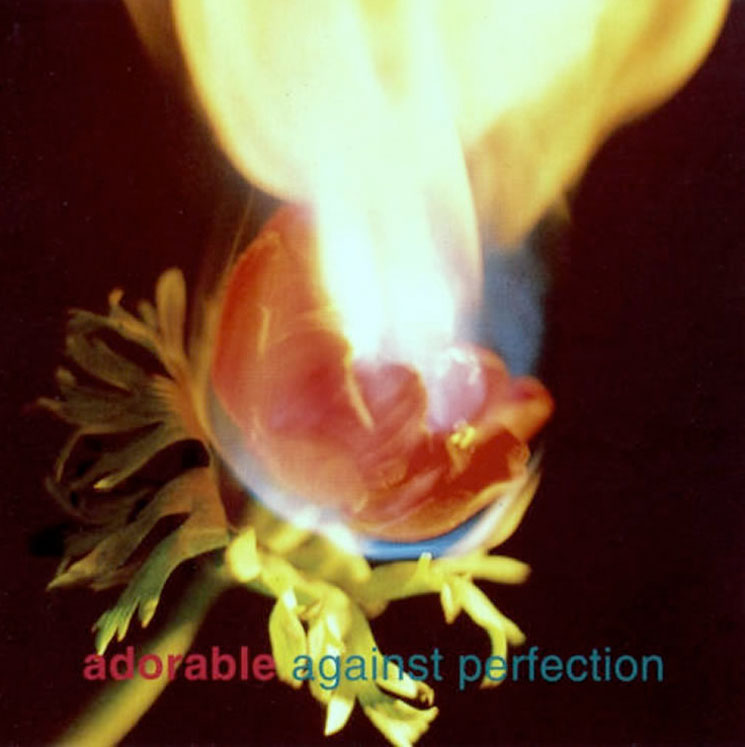
"If there's one thing I genuinely, genuinely believe it's that this band are gonna be massive. I really think we're gonna be absolutely HUGE!"
Okay, so Piotr Fijalkowski was a little off with his prediction, but when the singer/guitarist of Adorable had Alan McGee telling people his band were the next Sex Pistols, why shouldn't he think such a thing? Unfortunately for Adorable, the prediction would instead come true for another McGee signing, Oasis.
It's an absolute shame, because Adorable's debut album is a highly treasured Creation artefact. Best described as "Echo & the Bunnymen with distortion," Adorable arrived during the closing stages of shoegazing and the first phase of Britpop, falling somewhere in between the two with their crashing guitar noise and elegiac songwriting.
Originally titled Against Creation, it never resonated with the masses, but Adorable's debut was as good as the young band said it was. Fijalkowski's songs were shrewd, poetic stingers flaunting one-liner choruses that rang with hopeless romanticism. How "Homeboy" did not set the charts afire is a mystery, but the impact the song had on its fans was monumental. Against Perfection should have been Definitely Maybe, but the stars just didn't align for Adorable the way it did for the Gallagher brothers.
8. Sugar
Copper Blue
(1992)
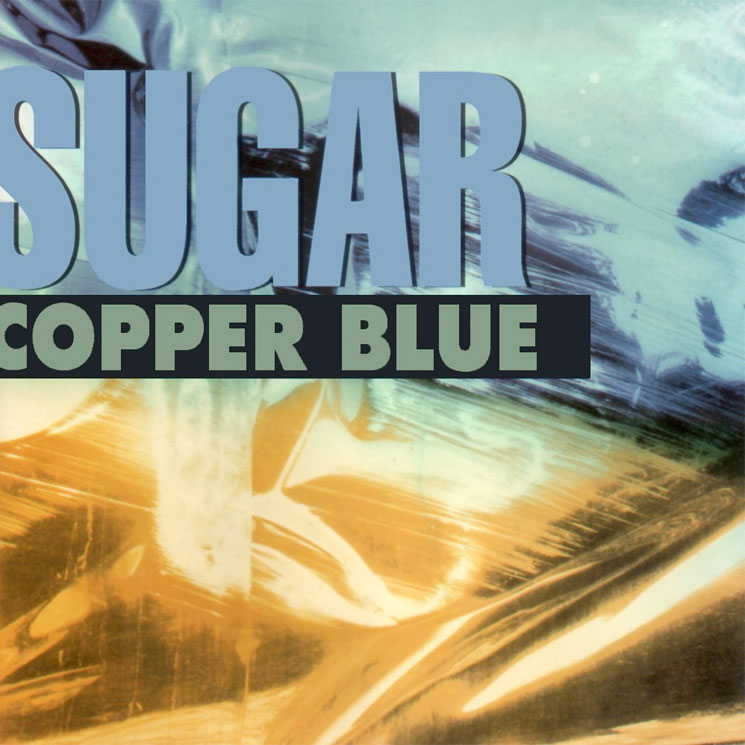
After the highly emotional and tumultuous breakup of Hüsker Dü, Bob Mould quickly bounced back with a pair of solo albums that showed he desperately needed to bare his soul. And while Workbook and Black Sheets of Rain were both enjoyable, Mould obviously felt the urge to form another band.
Like the Dü, Sugar were another trio who preferred ear-bleeding volume, but here, Mould's hooks were sharper than ever. Though Copper Blue was loud and aggressive, it didn't offer the same breakneck speed, embracing more midtempo pacing to carry those gargantuan melodies. And boy was it effective: the album spawned four perfect singles ("A Good Idea," "Helpless," "If I Could Change Your Mind" and "Changes") that hid plenty of dark, underlying themes. Smack dab in the middle was "The Slim," a deeply felt, heavy tribute to AIDS victims that he wrote before coming out as gay not too long after.
Copper Blue ended up becoming the biggest-selling album of Mould's career; despite all of the fanfare and importance placed on his previous band, Sugar would sell more records. To boot, the NME chose it as Album of the Year. Of course, eight months later, Sugar followed it up with the equally superb Beaster EP, comprising tracks from Copper Blue's sessions that were eventually packaged alongside the album.
7. The Boo Radleys
Giant Steps
(1993)

Prior to their third album, the Boo Radleys weren't just one of the lesser-known shoegaze acts on Creation; they were virtual unknowns. But after the underwhelming response to 1992's Everything's Alright Forever, the band sought to completely revolutionize their sound, and boy did it ever work.
Choosing to self-produce, the Boos took the "kitchen sink" approach, throwing dub, psychedelia, shoegaze, jazz, ambient, '60s pop and even some noise into the mix for a full-on stereophonic experience. Album standout "Lazarus" not only singlehandedly represented all of these ambitions, but it also proved to be a career highpoint for the band, settling in the annals as their best song ever. "Wish I Was Skinny" and "Barney (…and Me)" better suited the proto-Britpop phase the band were helping shape with acts like Blur and Suede, but both songs took pop into a whole new stratosphere with psychedelic codas that refused to stop until they reached full orgasm.
Earning the honour of Select's top album of 1993 over Björk's Post, Suede's debut, PJ Harvey's Rid of Me and Nirvana's In Utero was no fluke: Giant Steps was a juggernaut of an album in Britain.
6. Ride
Nowhere
(1990)
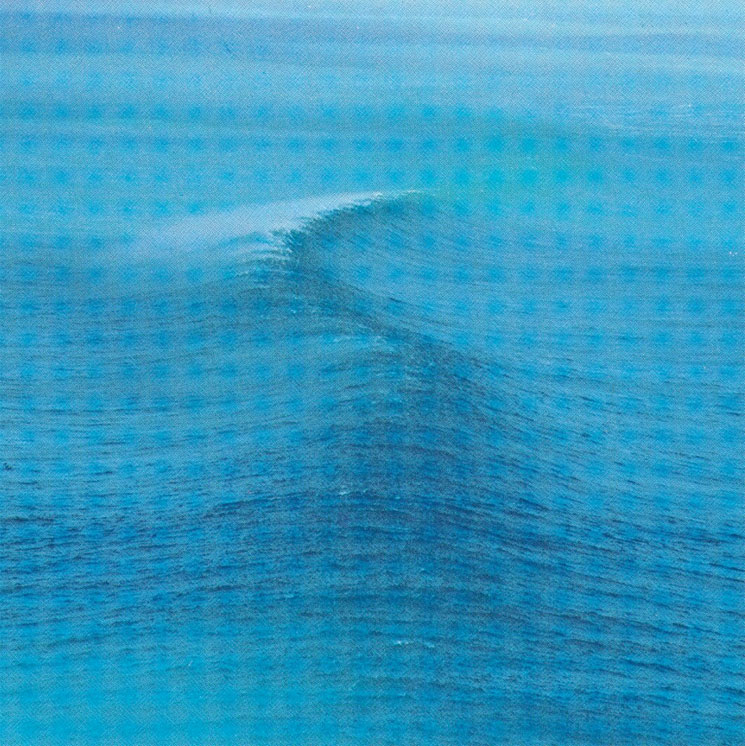
By the time their debut album was released in October 1990, Oxford's Ride were already indie pin-ups in the UK. Following a trio of well-received EPs, Nowhere basically turned shoegaze into a scene (that would go on to "celebrate itself"), pre-dating My Bloody Valentine's game-changing Loveless by a good year.
Ride were the most pop-minded of all shoegazers, blending huge waves of reverb and distortion with slushy melodies fit for teenage ears. The slow-burning "In a Different Place" sounds like it was conceived while Andy Bell had a girl resting her head on his shoulder, and "Dreams Burn Down" describes a date in "dear diary" prose, while its commanding rhythm and crescendo of crashing noise bolster the melodrama. It was "Vapour Trail," though, that became the hit, with the 12-string guitars and orchestra coalescing into an enchanted and beautiful piece.
Ride were always primed for, and even driven by, the prospects of pop stardom. They didn't exactly experiment like other shoegazers; they wrote songs that just could have easily been stripped down to acoustic guitars. But it was the noise they flooded those songs with that made every indie kid fall in love with them, and Nowhere definitely captured plenty of hearts, reaching No. 11 on the UK album chart and catapulting the band to moderate success in the U.S. (Originally released as an eight-song LP, their American label Sire tacked on the remaining three tracks from the band's previous Fall EP to make it more worthwhile to consumers.)
The band themselves have recognized the album's appeal and legacy, recently embarking on a Nowhere25 tour to commemorate its silver anniversary.
5. Teenage Fanclub
Bandwagonesque
(1991)
Creation experienced a pinnacle year in 1991, with stellar debut albums by Swervedriver and Slowdive, as well as stone-cold classics by Primal Scream and My Bloody Valentine. But it was the third album by unglamorous Scottish indie band Teenage Fanclub that managed to become the label's biggest international success that year.
Compared to those other records, Bandwagonesque focused more on simple pop song structures than epic studio experiments. A marked improvement on the sloppy indie rock of their first two albums, album number three was famously nicknamed "the fourth Big Star album," which the Fannies were more than happy to take as a compliment. The effortlessness of a song like "What You Do to Me," an earworm that basically consists of the title on repeat for two minutes, and the rollicking, head-nodding riffs of "Star Sign," demonstrated the value in keeping the music heavily melodic and uncomplicated. And when they tried to shake it up a little, the band included 82 seconds of explosive, feedback-driven grunge ("Satan") and a completely out of character instrumental of endless guitar soloing ("Is This Music?").
Although it didn't sell that many copies, Bandwagonesque did achieve three major feats: it earned the band a musical guest appearance on Saturday Night Live, took Album of the Year honours from Spin (beating out Nevermind, Out of Time and Achtung Baby!, to name a few); and inspired Kurt Cobain to call Teenage Fanclub "the best band in the world." More than anything, though, Bandwagonesque was a perfect power pop record.
4. Slowdive
Souvlaki
(1993)
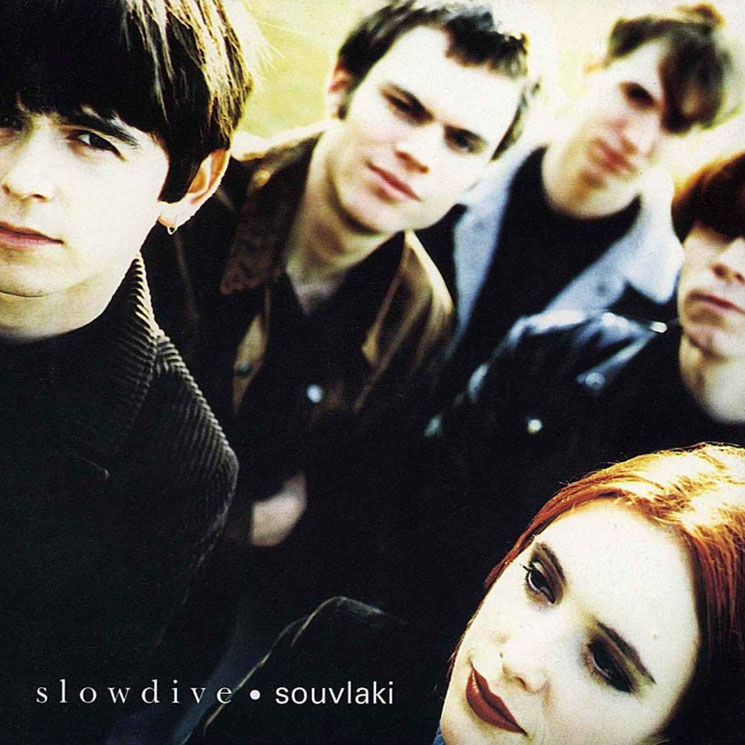
To quote Dave Simpson's review in Melody Maker, "At its worst, [Souvlaki] is a soulless void, devoid of pain, anger, feeling or concern… I would rather drown choking in a bath full of porridge than ever listen to it again."
Despite their cult audience, Slowdive were never critical darlings during their initial existence. The album's timing was its downfall, arriving at the height of Suede's popularity and the dawn of Britpop. Shoegaze had fallen out of fashion, and acts like Ride and Lush were learning quickly to abandon ship for cleaner production and stronger melodies. Slowdive were moving on too, in a completely different direction, one that saw the band sacrificing song structures for the sake of experimenting with noise and textures (see 1995's Pygmalion).
Although his involvement was limited to just one week in the studio with singer/guitarist/producer Neil Halstead, Brian Eno's contribution to Souvlaki was mammoth: the naked simplicity of "Here She Comes" and the cavernous echoes of "Sing" are his only two credited pieces, but it's quite possible that without Eno building Halstead's confidence, the album centrepiece "Souvlaki Space Station," a wall of crashing ambient dub, may not have ever arisen.
It's easy at times to get lost in all of the sonic trickery, but Souvlaki also served as a breakup album, documenting the demise of Halstead and Rachel Goswell's romance. Both "40 Days" and "Dagger" laid out all of the heartbreak, but the latter went one step further, foreshadowing what was to come in the devastating acoustic sounds of Mojave 3's debut. And of course, there is "Alison," the closest thing Slowdive ever had to a pop song; it's become their signature track and a unanimous fan favourite.
Needless to say, Souvlaki has been reappraised by many critics as a classic album, especially since the band's 2014 reunion. You might even get one to admit that, over time, it's become the definitive shoegaze album.
3. Oasis
Definitely Maybe
(1994)
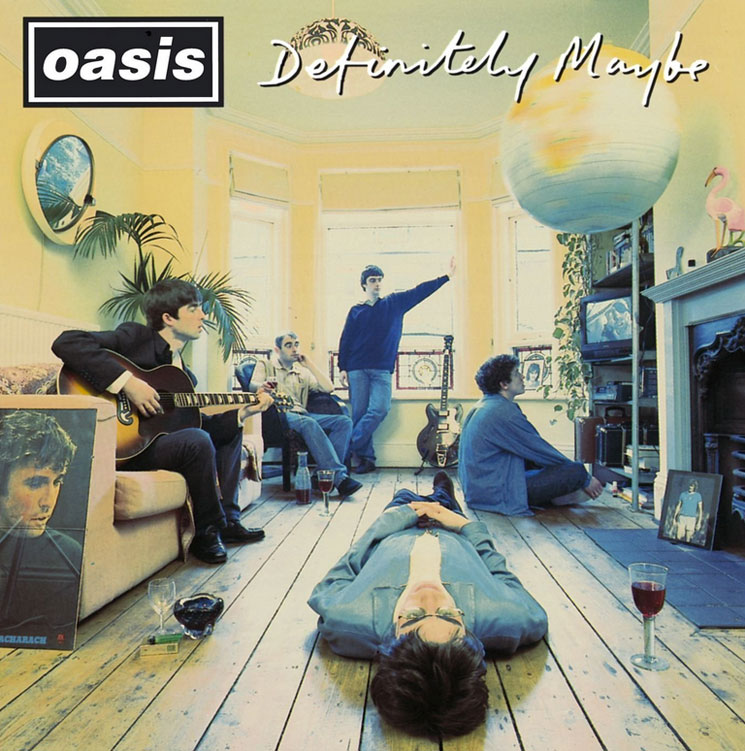
There is no question that Oasis were the most successful act on Creation. In fact, if it weren't for Oasis, chances are the label would have gone under much earlier than it eventually did. Oasis were the label's answer to the question of financial success, and it was as obvious as soon as they dropped their first single, the sneering "Supersonic."
With egos as big as their eyebrows, Liam and Noel Gallagher helped Oasis become an immediate sensation. Equally adored by both the public and critics, the band were put square in the middle of the developing phenomenon known as Britpop, alongside eventual nemeses Blur and their 1994 album, Parklife.
The appeal of Oasis was simple: guitar-heavy anthems with melodies borrowed from the Beatles and rhyming vocals that made it dead-easy for anyone to sing along to drunk or sober. "Live Forever" remains one of Britpop's greatest bangers; a response to the drug-addled, suicidal thoughts of Kurt Cobain, Noel wrote it as a literal and earnest life affirmation. The T-Rex-biting riffage and working class nod of "Cigarettes & Alcohol" provided listeners with a necessary distraction from real life. How "Slide Away," a heartfelt ode to Noel's girlfriend at the time and the album's best song, was never released as a single over "Shakermaker" is a complete mystery, however. That said, all 11 of Definitely Maybe's tracks could have been singles, had they really wanted to milk it.
Oasis's debut captured just about every honour, and is often considered one of the greatest British albums of all time. Perhaps more important than anything, it's also the album that spawned a generation of copycats, from wannabes like Northern Uproar and No Way Sis (an actual cover band) to success stories like Embrace and Arctic Monkeys.
2. Primal Scream
Screamadelica
(1991)
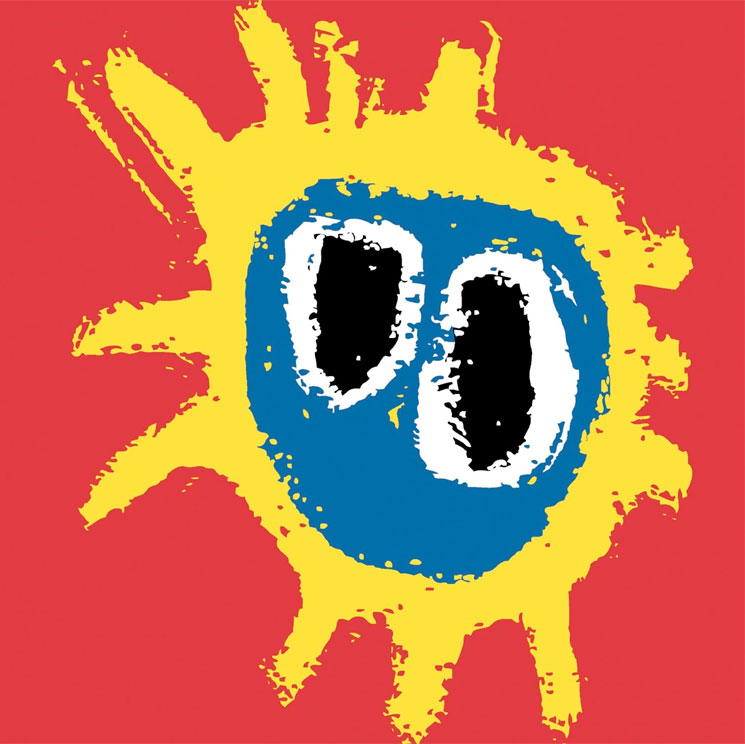
What do you get when you take a bunch of MC5-aping Glaswegians and introduce them to ecstasy? A gang who believe they've just invented acid house but accidentally make a genre-bending classic that defines its generation.
Prior to Screamadelica, Primal Scream had released two very different sounding albums: one of Byrds-ian jangle pop that helped define C86, the other a blistering collection of jams kicked out at full volume. However, when DJ/journalist Andrew Weatherall completely reassembled "I'm Losing More Than I'll Ever Have" using a bootleg Edie Brickell drum loop and some riot-inducing dialogue from The Wild Angels, the Scream all of a sudden had a brand new sound and audience. The song was rechristened "Loaded" and became an acid house anthem that set the stage for the Scream gang (Bobby Gillespie, Andrew Innes, Throb and Martin Duffy) to continue expanding their horizon for the next 25 years and counting.
Their third album, Screamadelica, built on the reinvention of "Loaded" and tapped into the club scene by presenting an experience for the listener that went from an elated peak ("Don't Fight It, Feel It") to a pillowy come down ("Shine Like Stars"). It was an album that, from track to track, moved from one high to the next by employing a range of disparate influences and producers: ambient dub on "Higher Than the Sun" courtesy of the Orb and Hugo Nicolson, gospel rock via longtime Stones producer Jimmy Miller and the radical transformation of the 13th Floor Elevators' "Slip Inside This House" into a psych-house banger by Hypnotone and Innes.
In 2011, Gillespie told The Guardian, "I felt that what we were doing at that point was what rock'n'roll should be, except it was modern, it was futuristic." It's hard to argue with him; what this ragtag bunch of leather-trousered rock'n'rollers achieved on Screamadelica was unlike anything else in music. Both a critical and a commercial success, and released in a year that gave us Nevermind, Loveless, Blue Lines and The Low End Theory, Screamadelica topped year-end album lists by Select and Melody Maker, and went on to take the inaugural Mercury Prize. Almost 25 years after its release, there's still nothing that can start a party quite like it.
1. My Bloody Valentine
Loveless
(1991)
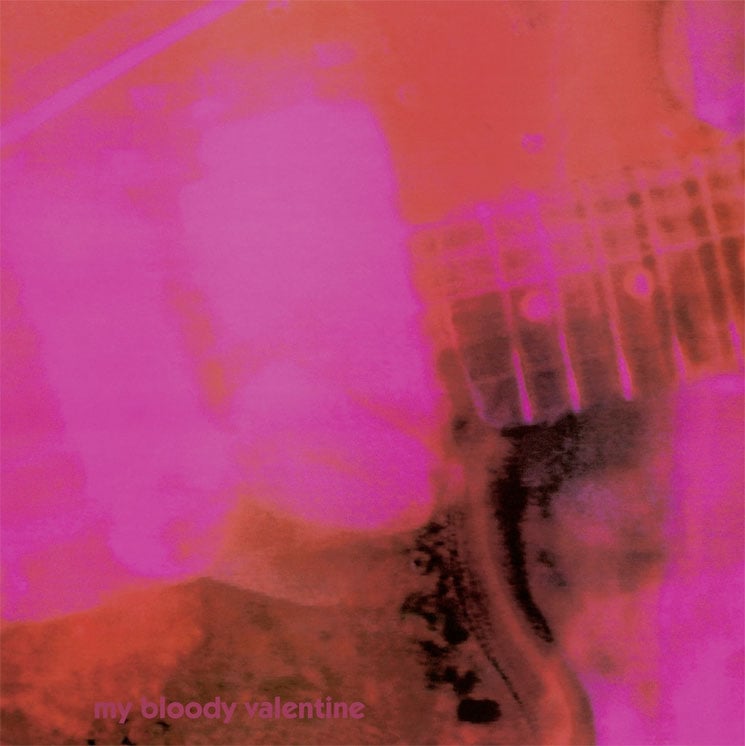
Oasis may have been the most successful band on Creation, but even Noel Gallagher would have to admit that My Bloody Valentine's Loveless was the label's most influential album. Alan McGee still remembers it as the one that almost sank Creation, after costing approximately half a million dollars to make (in pre-Oasis money, that signalled bankruptcy). Still, he's just as eager to boast about how he was the one responsible for funding such an astonishing record.
After spending their first few years making dissonant garage rock, Ireland's My Bloody Valentine signed to Creation and sounded like a completely different band on their first two EPs, 1988's You Made Me Realise and Feed Me With Your Kiss. An album, Isn't Anything, immediately followed the same year and displayed Kevin Shields' ear for deeper textures and inventive guitar tones; while bands like Cocteau Twins and the Jesus & Mary Chain laid the foundation, this was the album to truly establish the shoegaze sound.
No one could have anticipated the time and expense it would take for the band to complete the follow-up, but once it arrived, Loveless sounded like it came from another planet. Recorded mostly in mono, the sounds Shields conceived came via experimention with the tremolo bar (which he paid tribute to on the album's predecessor, the Tremolo EP). Though he plays down the amount of effects used to create these new guitar sounds, Shields was being hailed as the instrument's newest hero almost overnight.
What he achieved on tracks like "To Here Knows When," "When You Sleep" and "Loomer" was and still is downright confounding and disorienting; it was a ground-breaking moment for pop music, one that gave every musician listening an opportunity to discover even more newfangled ways to work outside of the box.
Loveless is often regarded as the Holy Grail of shoegaze, but it's really much more than that. This is an album that, to this day, still sounds like it's from the future, an uncontested masterpiece that will always remain as mysterious and breathtaking as it did on the very first listen.
What to Avoid:
When you Google "Kevin Rowland's My Beauty," the second result is a link to a Guardian interview titled "I was nuts." That's a pretty accurate description of the former Dexy's Midnight Runner frontman's second solo album. Though McGee claims to have been sober at the time of its 1999 release, you have to question that, given the album's lounge singer/karaoke-style jams. Never mind that much derided album cover; the songs here are the biggest crime.
Speaking of crimes, McGee committed one of his own when he chose to posthumously release the final Ride album after the band split. Ride's Tarantula (1995) was recorded as the band were falling apart, and tensions between Mark Gardener and Andy Bell were reaching a head. In the end, Bell won the argument, writing the majority of the album, which sounded nothing like the great young shoegazers they were just five years before. Instead, the album featured derivative retro rock that may have suited the time but not their fans, critics or even the band members themselves. With his subsequent band, Hurricane #1, Bell stayed on with Creation, aping the label's biggest act (and his future bandmates), Oasis. There is very little substance to be found in either of the band's two Creation albums, Hurricane #1 and Only the Strongest Will Survive.
McGee was a bold record executive, and even releasing My Beauty wasn't as daring as signing some dread-locked, white reggae beach bum from Bermuda named Mishka. Though he came from a musical family (his sister, Heather Nova, flirted with alt-fame in the '90s and was the best friend of McGee's wife at the time), the half-Canadian troubadour didn't just feel out of place with the Bob Marley-parroting tunes on his 1999 self-titled debut, he raised some serious red flags about where the label was heading. One year later the label ceased operations.
You should also steer clear of basically everything Creation released in its final years by post-Britpop chancers like One Lady Owner, 18 Wheeler, 3 Colours Red and Heavy Stereo.
Further Listening:
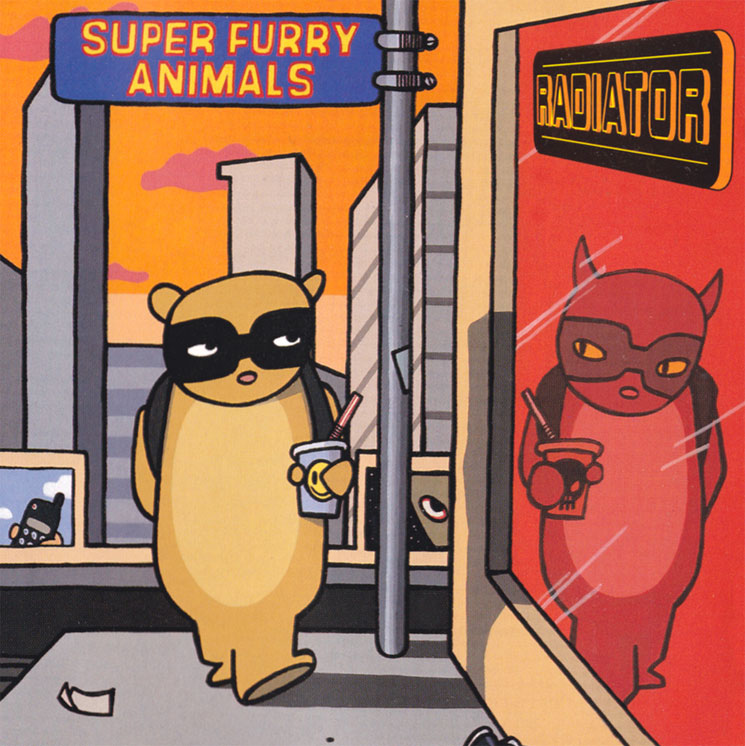
McGee had the foresight to see the wonderfully madcap concepts brewing in the minds of five Welshman that went by the name Super Furry Animals. That he didn't realize they were singing in English when he first saw them spoke for their eccentricity, which rang out loud and clear in their ingenious, tech-savvy psychedelic pop. You could really make an argument for any of their releases, as each one they flirted with new genres — prog, techno, jungle, metal and even a full album of Welsh language folk music — but when it comes to the Creation years, it's hard to deny Radiator as the true standout. SFA sharpened their ability to write fully formed yet still wildly imaginative pop songs like "The International Language of Screaming" and "Play It Cool" within their most cohesive set of songs.
Although they were mixed up the shoegaze fold, Oxford's Swervedriver only really fit in because of their love for noise and effects pedals. Really, they were more driven by the loud forces of rock'n'roll, and had the riffs to show for it. Their 1991 debut, Raise, was a solid first effort that signalled the best was yet to come. And come it did with Mezcal Head, a beguiling journey of "space travel rock'n'roll" that peaks with an epic clash of noise pop and rockabilly through the fittingly titled "Last Train to Satansville" and ends on the 12-minute "Never Lose That Feeling/Never Learn," a two-sided opus that begins with liquid guitars and a hypnotically repetitive chorus and signs off in a blizzard of sax noodling and wah-wah humming.
Behind the evocative songwriting of Guy Chadwick, the Bunnymen-inspired House of Love were the first Creation act to be seriously considered for mainstream supremacy. Though it ultimately wasn't meant to be, their one and only album for Creation was still a huge critical success. On the back of the glimmering lead single "Christine," the album lived up to the hype the press gave them, and might be the most coherent work ever fuelled by LSD.
Other seminal Creation releases by aforementioned artists include My Bloody Valentine's shoegazing blueprint Isn't Anything (1988), Slowdive's early EPs collection Blue Day (1992), Ride's pop-leaning Going Blank Again (1992), Oasis's ubiquitous chart-topper [What's the Story?] Morning Glory (1995), Teenage Fanclub's criminally underrated Grand Prix (1995) and the label's final release, Primal Scream's anarchic electro-punk manifesto, XTRMNTR (2000).
Nicknamed the "International Guardians of Rock and Roll," Creation was there leading the way for every major movement in rock music in its 17-year run: indie pop and C86, acid house, shoegaze, grunge and Britpop. Even when it struggled to stay relevant in its last remaining years, McGee was still able to go out on a high note in 2000 with one of his finest records, Primal Scream's XTRMNTR. Without Creation, My Bloody Valentine may never have been able to afford to make Loveless; Super Furry Animals may never have left the green grasses of Wales; Primal Scream may never have discovered ecstasy; and Noel Gallagher may never have taken over his brother's band and instead may have returned to the road with Inspiral Carpets as their guitar tech.
In his 2000 book, The Creation Records Story: My Magpie Eyes Are Hungry for The Prize, author David Cavanagh summed up the secret to McGee's success: "The reason Creation succeeded where other labels failed is not because McGee is a success and his rivals are all failures, but because he persevered when they gave up; because he took risks while they played safe and because he found Oasis just when he needed them."
Essential Albums:
10. Felt
Forever Breathes the Lonely Word
(1986)

Arguably the most intriguing and misunderstood figure in Creation's history was Felt's mononymous leader, Lawrence. He was an absolute paradox: one of UK indie's most prolific songwriters, he released ten albums of outsider bedroom pop in seven years, along with a slew of singles, but he was also a self-defeating dreamer who savoured his inability to succeed. Despite a devoted cult following, Felt were often overshadowed by another jangly indie band with an eccentric frontman.
With Felt's sixth album, Forever Breathes the Lonely Word, Lawrence released his masterpiece. Bolstered by the commanding organ of Martin Duffy (whose face graced the cover and joined Primal Scream after Felt split), more than any other Felt record, Forever showed remarkable restraint from Lawrence to keep things cohesive and focused for a change. Unlike on previous efforts, he eschewed layered instrumentals and penned eight perfectly minimal gems that were as accessible as they were insular. He even managed to spin a solemn lyric like "All the people I like are those that are dead" into a sing-along chorus.
As McGee would later explain in The Guardian, Forever Breathes the Lonely Word was "too understated to be commercial, too art to go pop, too pop to go art," but pure "pop perfection."
9. Adorable
Against Perfection
(1993)

"If there's one thing I genuinely, genuinely believe it's that this band are gonna be massive. I really think we're gonna be absolutely HUGE!"
Okay, so Piotr Fijalkowski was a little off with his prediction, but when the singer/guitarist of Adorable had Alan McGee telling people his band were the next Sex Pistols, why shouldn't he think such a thing? Unfortunately for Adorable, the prediction would instead come true for another McGee signing, Oasis.
It's an absolute shame, because Adorable's debut album is a highly treasured Creation artefact. Best described as "Echo & the Bunnymen with distortion," Adorable arrived during the closing stages of shoegazing and the first phase of Britpop, falling somewhere in between the two with their crashing guitar noise and elegiac songwriting.
Originally titled Against Creation, it never resonated with the masses, but Adorable's debut was as good as the young band said it was. Fijalkowski's songs were shrewd, poetic stingers flaunting one-liner choruses that rang with hopeless romanticism. How "Homeboy" did not set the charts afire is a mystery, but the impact the song had on its fans was monumental. Against Perfection should have been Definitely Maybe, but the stars just didn't align for Adorable the way it did for the Gallagher brothers.
8. Sugar
Copper Blue
(1992)

After the highly emotional and tumultuous breakup of Hüsker Dü, Bob Mould quickly bounced back with a pair of solo albums that showed he desperately needed to bare his soul. And while Workbook and Black Sheets of Rain were both enjoyable, Mould obviously felt the urge to form another band.
Like the Dü, Sugar were another trio who preferred ear-bleeding volume, but here, Mould's hooks were sharper than ever. Though Copper Blue was loud and aggressive, it didn't offer the same breakneck speed, embracing more midtempo pacing to carry those gargantuan melodies. And boy was it effective: the album spawned four perfect singles ("A Good Idea," "Helpless," "If I Could Change Your Mind" and "Changes") that hid plenty of dark, underlying themes. Smack dab in the middle was "The Slim," a deeply felt, heavy tribute to AIDS victims that he wrote before coming out as gay not too long after.
Copper Blue ended up becoming the biggest-selling album of Mould's career; despite all of the fanfare and importance placed on his previous band, Sugar would sell more records. To boot, the NME chose it as Album of the Year. Of course, eight months later, Sugar followed it up with the equally superb Beaster EP, comprising tracks from Copper Blue's sessions that were eventually packaged alongside the album.
7. The Boo Radleys
Giant Steps
(1993)

Prior to their third album, the Boo Radleys weren't just one of the lesser-known shoegaze acts on Creation; they were virtual unknowns. But after the underwhelming response to 1992's Everything's Alright Forever, the band sought to completely revolutionize their sound, and boy did it ever work.
Choosing to self-produce, the Boos took the "kitchen sink" approach, throwing dub, psychedelia, shoegaze, jazz, ambient, '60s pop and even some noise into the mix for a full-on stereophonic experience. Album standout "Lazarus" not only singlehandedly represented all of these ambitions, but it also proved to be a career highpoint for the band, settling in the annals as their best song ever. "Wish I Was Skinny" and "Barney (…and Me)" better suited the proto-Britpop phase the band were helping shape with acts like Blur and Suede, but both songs took pop into a whole new stratosphere with psychedelic codas that refused to stop until they reached full orgasm.
Earning the honour of Select's top album of 1993 over Björk's Post, Suede's debut, PJ Harvey's Rid of Me and Nirvana's In Utero was no fluke: Giant Steps was a juggernaut of an album in Britain.
6. Ride
Nowhere
(1990)

By the time their debut album was released in October 1990, Oxford's Ride were already indie pin-ups in the UK. Following a trio of well-received EPs, Nowhere basically turned shoegaze into a scene (that would go on to "celebrate itself"), pre-dating My Bloody Valentine's game-changing Loveless by a good year.
Ride were the most pop-minded of all shoegazers, blending huge waves of reverb and distortion with slushy melodies fit for teenage ears. The slow-burning "In a Different Place" sounds like it was conceived while Andy Bell had a girl resting her head on his shoulder, and "Dreams Burn Down" describes a date in "dear diary" prose, while its commanding rhythm and crescendo of crashing noise bolster the melodrama. It was "Vapour Trail," though, that became the hit, with the 12-string guitars and orchestra coalescing into an enchanted and beautiful piece.
Ride were always primed for, and even driven by, the prospects of pop stardom. They didn't exactly experiment like other shoegazers; they wrote songs that just could have easily been stripped down to acoustic guitars. But it was the noise they flooded those songs with that made every indie kid fall in love with them, and Nowhere definitely captured plenty of hearts, reaching No. 11 on the UK album chart and catapulting the band to moderate success in the U.S. (Originally released as an eight-song LP, their American label Sire tacked on the remaining three tracks from the band's previous Fall EP to make it more worthwhile to consumers.)
The band themselves have recognized the album's appeal and legacy, recently embarking on a Nowhere25 tour to commemorate its silver anniversary.
5. Teenage Fanclub
Bandwagonesque
(1991)
Creation experienced a pinnacle year in 1991, with stellar debut albums by Swervedriver and Slowdive, as well as stone-cold classics by Primal Scream and My Bloody Valentine. But it was the third album by unglamorous Scottish indie band Teenage Fanclub that managed to become the label's biggest international success that year.
Compared to those other records, Bandwagonesque focused more on simple pop song structures than epic studio experiments. A marked improvement on the sloppy indie rock of their first two albums, album number three was famously nicknamed "the fourth Big Star album," which the Fannies were more than happy to take as a compliment. The effortlessness of a song like "What You Do to Me," an earworm that basically consists of the title on repeat for two minutes, and the rollicking, head-nodding riffs of "Star Sign," demonstrated the value in keeping the music heavily melodic and uncomplicated. And when they tried to shake it up a little, the band included 82 seconds of explosive, feedback-driven grunge ("Satan") and a completely out of character instrumental of endless guitar soloing ("Is This Music?").
Although it didn't sell that many copies, Bandwagonesque did achieve three major feats: it earned the band a musical guest appearance on Saturday Night Live, took Album of the Year honours from Spin (beating out Nevermind, Out of Time and Achtung Baby!, to name a few); and inspired Kurt Cobain to call Teenage Fanclub "the best band in the world." More than anything, though, Bandwagonesque was a perfect power pop record.
4. Slowdive
Souvlaki
(1993)

To quote Dave Simpson's review in Melody Maker, "At its worst, [Souvlaki] is a soulless void, devoid of pain, anger, feeling or concern… I would rather drown choking in a bath full of porridge than ever listen to it again."
Despite their cult audience, Slowdive were never critical darlings during their initial existence. The album's timing was its downfall, arriving at the height of Suede's popularity and the dawn of Britpop. Shoegaze had fallen out of fashion, and acts like Ride and Lush were learning quickly to abandon ship for cleaner production and stronger melodies. Slowdive were moving on too, in a completely different direction, one that saw the band sacrificing song structures for the sake of experimenting with noise and textures (see 1995's Pygmalion).
Although his involvement was limited to just one week in the studio with singer/guitarist/producer Neil Halstead, Brian Eno's contribution to Souvlaki was mammoth: the naked simplicity of "Here She Comes" and the cavernous echoes of "Sing" are his only two credited pieces, but it's quite possible that without Eno building Halstead's confidence, the album centrepiece "Souvlaki Space Station," a wall of crashing ambient dub, may not have ever arisen.
It's easy at times to get lost in all of the sonic trickery, but Souvlaki also served as a breakup album, documenting the demise of Halstead and Rachel Goswell's romance. Both "40 Days" and "Dagger" laid out all of the heartbreak, but the latter went one step further, foreshadowing what was to come in the devastating acoustic sounds of Mojave 3's debut. And of course, there is "Alison," the closest thing Slowdive ever had to a pop song; it's become their signature track and a unanimous fan favourite.
Needless to say, Souvlaki has been reappraised by many critics as a classic album, especially since the band's 2014 reunion. You might even get one to admit that, over time, it's become the definitive shoegaze album.
3. Oasis
Definitely Maybe
(1994)

There is no question that Oasis were the most successful act on Creation. In fact, if it weren't for Oasis, chances are the label would have gone under much earlier than it eventually did. Oasis were the label's answer to the question of financial success, and it was as obvious as soon as they dropped their first single, the sneering "Supersonic."
With egos as big as their eyebrows, Liam and Noel Gallagher helped Oasis become an immediate sensation. Equally adored by both the public and critics, the band were put square in the middle of the developing phenomenon known as Britpop, alongside eventual nemeses Blur and their 1994 album, Parklife.
The appeal of Oasis was simple: guitar-heavy anthems with melodies borrowed from the Beatles and rhyming vocals that made it dead-easy for anyone to sing along to drunk or sober. "Live Forever" remains one of Britpop's greatest bangers; a response to the drug-addled, suicidal thoughts of Kurt Cobain, Noel wrote it as a literal and earnest life affirmation. The T-Rex-biting riffage and working class nod of "Cigarettes & Alcohol" provided listeners with a necessary distraction from real life. How "Slide Away," a heartfelt ode to Noel's girlfriend at the time and the album's best song, was never released as a single over "Shakermaker" is a complete mystery, however. That said, all 11 of Definitely Maybe's tracks could have been singles, had they really wanted to milk it.
Oasis's debut captured just about every honour, and is often considered one of the greatest British albums of all time. Perhaps more important than anything, it's also the album that spawned a generation of copycats, from wannabes like Northern Uproar and No Way Sis (an actual cover band) to success stories like Embrace and Arctic Monkeys.
2. Primal Scream
Screamadelica
(1991)

What do you get when you take a bunch of MC5-aping Glaswegians and introduce them to ecstasy? A gang who believe they've just invented acid house but accidentally make a genre-bending classic that defines its generation.
Prior to Screamadelica, Primal Scream had released two very different sounding albums: one of Byrds-ian jangle pop that helped define C86, the other a blistering collection of jams kicked out at full volume. However, when DJ/journalist Andrew Weatherall completely reassembled "I'm Losing More Than I'll Ever Have" using a bootleg Edie Brickell drum loop and some riot-inducing dialogue from The Wild Angels, the Scream all of a sudden had a brand new sound and audience. The song was rechristened "Loaded" and became an acid house anthem that set the stage for the Scream gang (Bobby Gillespie, Andrew Innes, Throb and Martin Duffy) to continue expanding their horizon for the next 25 years and counting.
Their third album, Screamadelica, built on the reinvention of "Loaded" and tapped into the club scene by presenting an experience for the listener that went from an elated peak ("Don't Fight It, Feel It") to a pillowy come down ("Shine Like Stars"). It was an album that, from track to track, moved from one high to the next by employing a range of disparate influences and producers: ambient dub on "Higher Than the Sun" courtesy of the Orb and Hugo Nicolson, gospel rock via longtime Stones producer Jimmy Miller and the radical transformation of the 13th Floor Elevators' "Slip Inside This House" into a psych-house banger by Hypnotone and Innes.
In 2011, Gillespie told The Guardian, "I felt that what we were doing at that point was what rock'n'roll should be, except it was modern, it was futuristic." It's hard to argue with him; what this ragtag bunch of leather-trousered rock'n'rollers achieved on Screamadelica was unlike anything else in music. Both a critical and a commercial success, and released in a year that gave us Nevermind, Loveless, Blue Lines and The Low End Theory, Screamadelica topped year-end album lists by Select and Melody Maker, and went on to take the inaugural Mercury Prize. Almost 25 years after its release, there's still nothing that can start a party quite like it.
1. My Bloody Valentine
Loveless
(1991)

Oasis may have been the most successful band on Creation, but even Noel Gallagher would have to admit that My Bloody Valentine's Loveless was the label's most influential album. Alan McGee still remembers it as the one that almost sank Creation, after costing approximately half a million dollars to make (in pre-Oasis money, that signalled bankruptcy). Still, he's just as eager to boast about how he was the one responsible for funding such an astonishing record.
After spending their first few years making dissonant garage rock, Ireland's My Bloody Valentine signed to Creation and sounded like a completely different band on their first two EPs, 1988's You Made Me Realise and Feed Me With Your Kiss. An album, Isn't Anything, immediately followed the same year and displayed Kevin Shields' ear for deeper textures and inventive guitar tones; while bands like Cocteau Twins and the Jesus & Mary Chain laid the foundation, this was the album to truly establish the shoegaze sound.
No one could have anticipated the time and expense it would take for the band to complete the follow-up, but once it arrived, Loveless sounded like it came from another planet. Recorded mostly in mono, the sounds Shields conceived came via experimention with the tremolo bar (which he paid tribute to on the album's predecessor, the Tremolo EP). Though he plays down the amount of effects used to create these new guitar sounds, Shields was being hailed as the instrument's newest hero almost overnight.
What he achieved on tracks like "To Here Knows When," "When You Sleep" and "Loomer" was and still is downright confounding and disorienting; it was a ground-breaking moment for pop music, one that gave every musician listening an opportunity to discover even more newfangled ways to work outside of the box.
Loveless is often regarded as the Holy Grail of shoegaze, but it's really much more than that. This is an album that, to this day, still sounds like it's from the future, an uncontested masterpiece that will always remain as mysterious and breathtaking as it did on the very first listen.
What to Avoid:
When you Google "Kevin Rowland's My Beauty," the second result is a link to a Guardian interview titled "I was nuts." That's a pretty accurate description of the former Dexy's Midnight Runner frontman's second solo album. Though McGee claims to have been sober at the time of its 1999 release, you have to question that, given the album's lounge singer/karaoke-style jams. Never mind that much derided album cover; the songs here are the biggest crime.
Speaking of crimes, McGee committed one of his own when he chose to posthumously release the final Ride album after the band split. Ride's Tarantula (1995) was recorded as the band were falling apart, and tensions between Mark Gardener and Andy Bell were reaching a head. In the end, Bell won the argument, writing the majority of the album, which sounded nothing like the great young shoegazers they were just five years before. Instead, the album featured derivative retro rock that may have suited the time but not their fans, critics or even the band members themselves. With his subsequent band, Hurricane #1, Bell stayed on with Creation, aping the label's biggest act (and his future bandmates), Oasis. There is very little substance to be found in either of the band's two Creation albums, Hurricane #1 and Only the Strongest Will Survive.
McGee was a bold record executive, and even releasing My Beauty wasn't as daring as signing some dread-locked, white reggae beach bum from Bermuda named Mishka. Though he came from a musical family (his sister, Heather Nova, flirted with alt-fame in the '90s and was the best friend of McGee's wife at the time), the half-Canadian troubadour didn't just feel out of place with the Bob Marley-parroting tunes on his 1999 self-titled debut, he raised some serious red flags about where the label was heading. One year later the label ceased operations.
You should also steer clear of basically everything Creation released in its final years by post-Britpop chancers like One Lady Owner, 18 Wheeler, 3 Colours Red and Heavy Stereo.
Further Listening:

McGee had the foresight to see the wonderfully madcap concepts brewing in the minds of five Welshman that went by the name Super Furry Animals. That he didn't realize they were singing in English when he first saw them spoke for their eccentricity, which rang out loud and clear in their ingenious, tech-savvy psychedelic pop. You could really make an argument for any of their releases, as each one they flirted with new genres — prog, techno, jungle, metal and even a full album of Welsh language folk music — but when it comes to the Creation years, it's hard to deny Radiator as the true standout. SFA sharpened their ability to write fully formed yet still wildly imaginative pop songs like "The International Language of Screaming" and "Play It Cool" within their most cohesive set of songs.
Although they were mixed up the shoegaze fold, Oxford's Swervedriver only really fit in because of their love for noise and effects pedals. Really, they were more driven by the loud forces of rock'n'roll, and had the riffs to show for it. Their 1991 debut, Raise, was a solid first effort that signalled the best was yet to come. And come it did with Mezcal Head, a beguiling journey of "space travel rock'n'roll" that peaks with an epic clash of noise pop and rockabilly through the fittingly titled "Last Train to Satansville" and ends on the 12-minute "Never Lose That Feeling/Never Learn," a two-sided opus that begins with liquid guitars and a hypnotically repetitive chorus and signs off in a blizzard of sax noodling and wah-wah humming.
Behind the evocative songwriting of Guy Chadwick, the Bunnymen-inspired House of Love were the first Creation act to be seriously considered for mainstream supremacy. Though it ultimately wasn't meant to be, their one and only album for Creation was still a huge critical success. On the back of the glimmering lead single "Christine," the album lived up to the hype the press gave them, and might be the most coherent work ever fuelled by LSD.
Other seminal Creation releases by aforementioned artists include My Bloody Valentine's shoegazing blueprint Isn't Anything (1988), Slowdive's early EPs collection Blue Day (1992), Ride's pop-leaning Going Blank Again (1992), Oasis's ubiquitous chart-topper [What's the Story?] Morning Glory (1995), Teenage Fanclub's criminally underrated Grand Prix (1995) and the label's final release, Primal Scream's anarchic electro-punk manifesto, XTRMNTR (2000).
